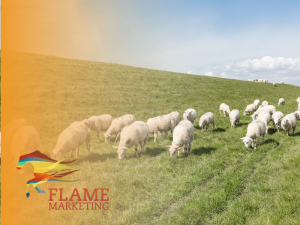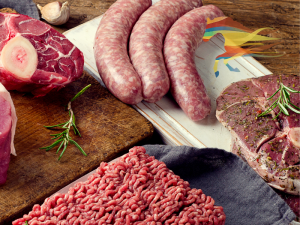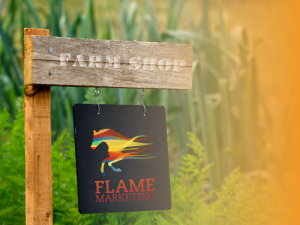

There are a few key elements to creating a successful farm diversification project. Firstly, you need to consider the skills and resources you already have to hand. 
For example, imagine you want to offer meat boxes, do you have the butchery skills to prepare the meat on-farm? Or would this need to be done through someone else? Likewise consider the land and resources you have to hand, is there an old disused barn in a corner of a field, could that be converted into an attractive and rustic holiday let.
Regardless of what type of project you are interested in there are bound to be skills or resources that you are lacking. This issue is not whether you have all of the skills/resources required but to establish which projects suit the skills/resources you do have best. By considering your current skills/resources early in the diversification project you can also start to consider what resources or skills you will need to bring in. This could include needing a planning consultant to redevelop an existing building or a website designer to create a site you can sell from.
Once you have considered your skills and resources you will likely have discounted some diversification ideas, but you may have come up with even more. Now is a good time to write down a list of all the projects that suit your skillset.
From here you can consider how each of the farm diversification options will impact your current farming practices. We understand that convincing your parents of a new diversification project on their generational farm can be hard. It is to be expected that they will have fears over how the project will affect their existing farm business. Firstly, try to discount at projects which are likely to negatively impact or drastically change your current farm business. This will reduce the risk of the diversification project and will help to make the project more attractive to your family.
Ideally, you want to choose a diversification project which benefits or compliments the traditional farm activities.
So, as a meat producer, the obvious choice is to choose a diversification project which allows you to sell your meat for more money. Either directly to trade customers such as restaurants or to consumers for home use. But even you decide that selling meat through alternative routes to market is the best option for your farm you will need to take time to consider how best to do this.
We often deal with farmers who view everyone as their customer. Although we understand that view it is simply not effective when selling or marketing online. So, the next step in marketing a successful diversification project, is to consider who your ideal client is. Take time to develop your idea of them clearly.
How old are they? Do they have children? Where do they live? What are their hobbies or interests?
The answers to these questions will vary between farms and there is no wrong or right answers. Your answers might include men aged 30-40 living near Cardiff, or women in their 50’s in Birmingham. But the key is to find the right ideal customer for you.
The more you learn about your ideal customer the easier it will be to target them through marketing and to connect with them on a personal level. By developing strong relationships with your customers, you will increase spending and have more repeat custom.
If you decide sell to businesses, either hospitality or retail your ideal customer will be a company, rather than a person, but the same applies in finding the right businesses.
Once you know who your ideal customer is you can start to decide on the best way to sell to them.
So now you have a good idea of your diversification plan and who your ideal customer is. The next step is to consider more specifically the product you are offering. You need to consider what is achievable and practical for your Agri-business. If you can access butchery services either on-farm or very locally then your options are very open and you may well be able to supply a full range of meat products. But if this is a concern you may find a more refined version of the ½ or ¼ carcass approach is a better fit. This can be refined with some limited butchery and a meat box style option.
more refined version of the ½ or ¼ carcass approach is a better fit. This can be refined with some limited butchery and a meat box style option.
You also need to consider the logistics of moving the product from your farm to your customer. Will they have to come and pick it up? Will you courier it? How will that affect your costs?
Now one concern that often comes up is carcass balance. There will always be a higher demand for some cuts of meat compared to others, whether its bacon over pork shoulder or mince over steak. But you can use marketing to reduce this issue.
Meat Boxes are a popular way to ensure carcass balance is maintained. However, some consumers can be put off by the fear of receiving cuts they don’t know how to use. But there are some simple ways to reduce this issue, we can learn a lot from how vegetable box suppliers have dealt with similar fears. By including an information card with your meat boxes, you can give customers information on the cuts of meat included in the box and even offer them some recipe ideas for the less popular cuts.
These can also be included on your website as a great way of showing your expertise and building a relationship with your ideal customer.
This brings me on to the next issue. There is an increasing number of local suppliers of quality meat direct from farm to table, so what makes you so special?
When marketing online you need to consider what makes you different from your competitors. This could be related to your service, your product, or your ideal customer, or something else entirely.
Try making a list of the things that makes you stand apart from your competitors. Think about what the alternative options are for your ideal customers, is it a supermarket? Is it another farm shop?
How can you stand apart from these alternatives?
Are you free range? Organic? Do you raise rare or native breeds? Is it there something special about the service you offer?
This list can help you to plan what elements of your offering will be important when marketing your products to your ideal customer. It can also help when developing branding for your business. For example, if your livestock are kept free-range you may want to reflect this with green or earthy tones in your brand colours.
 Now I am not going to detail every stage of developing a farm brand here. But this is a rough description of how we start to build your brand based on the decisions you have made about your ideal customer and product.
Now I am not going to detail every stage of developing a farm brand here. But this is a rough description of how we start to build your brand based on the decisions you have made about your ideal customer and product.
When we first look at marketing, we start by completing research on other relevant brands and your ideal customer. At this stage, we also start to develop an understanding of your Search Engine Optimisation (SEO) strategy which in turn ensures that not only will your website look great but your customers will be able to find it. Most website development companies don’t undertake SEO research when building your site. This means we often meet clients who have spent a lot of money on a very pretty website but it is doing nothing for their business because their ideal customer isn’t landing on the site. We ensure that SEO is built into your website from the start.
While the website is being built it is time to consider the pretty bit of marketing the branding. We work with a few excellent graphic designers who help our clients to create stunning and impactful logos and branding elements. Your brand should be a distilled visual indicator of what your business does and what it stands for. A logo can communicate quality, product, heritage and so much more.
So, with a great brand, a clear ideal customer and an SEO ready website you are almost ready to go. But now you need to consider how you are going to keep that momentum going. We speak to so many people who think once all the above is done you just have to sit back and wait for the customers to come. But it isn’t that simple, you need to keep the momentum up.
The internet, much like people, loves new things and so you have to keep feeding it with new quality content. Which is why we develop content plans for our clients, we normally plan 3-6 months of content and then get to work on creating it for our clients. Sometimes we write blogs for them sometimes we record videos, sometimes we just coach clients on how to create their own content. But the key is to have quality targeted content that your ideal customer will connect with. And that is our speciality.
So what’s stopping you? Book a free initial consultation today!